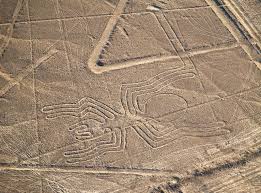Nazca Lines:

Scientists have discovered more than 300 never-before-seen Nazca Lines in Peru.
- The new lines included abstract humanoids, “decapitated heads,” domesticated animals, fish, birds, cats, a potential “ceremonial scene” and human/animal interactions.
- The most bizarre shape was arguably a 72-foot-long (22 meters) “killer whale holding a knife.”
- The staggering new haul was unearthed in just six months with the help of artificial intelligence (AI) and almost doubles the number of known geoglyphs in the region.
- The Nazca Lines are a group of large human-carved geoglyphs located in a roughly 170-square-mile (440 square kilometres) area of Peru’s Nazca Desert.
- The ancient artworks were likely created between 200 B.C. and A.D. 500 by members of the pre-Incan civilisation, known as the Nazca (or Nasca), who removed the upper layers of the desert’s red-tinged surface pebbles to reveal sections of lighter soil in a wide range of different shapes and sizes.




